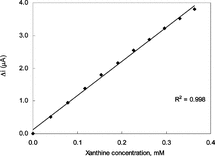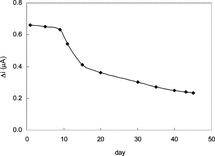Figures & data
Figure 1 The effect of oxygen passage time upon the sensitivity of biosensor to 1.5 × 10−4 M xanthine in 0.025 M phosphate buffer (pH 7.4) at 25°C. (a): without the passage of oxygen (b): 5 minutes of oxygen passage, (c): 10 minutes of oxygen passage, (d): 20 minutes of oxygen passage.
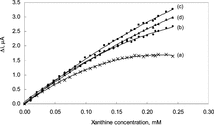
Figure 2 The response time of xanthine biosensor at 25°C. Xanthine concentration: (a) 1.0 × 10−5 M, (b) 5.0 × 10−5 M, (c) 1.0 × 10−4 M in 0.025 M phosphate buffer (pH 7.4).

Figure 3 The effect of solution pH on the response to 5.0 × 10−5 M xanthine in 0.025 M phosphate buffer solution at 25°C. The operating potential is +0.7 V vs SCE.
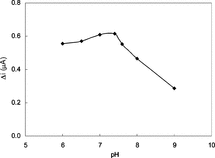
Figure 4 The effect of temperature upon the sensitivity of biosensor against xanthine (0.025 M pH 7.4 phosphate buffer).
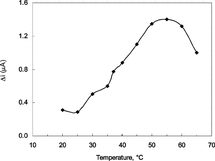
Figure 5 The effect of the phosphate concentration upon the sensitivity of the biosensor against xanthine (pH 7.4 phosphate buffer, 25°C).
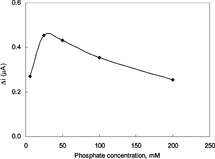
Figure 6 The effect of enzyme concentration upon the sensitivity of biosensor against xanthine (0.025 M phosphate buffer, 25°C).
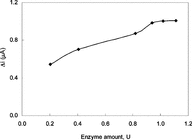
Figure 7 The effect of xanthine concentration upon the amperometric response of the biosensor (0.025 M pH 7.4 phosphate buffer, 25°C).

Table 1. The properties and the optimum working conditions of the biosensor
Table 2. The properties of xanthine biosensors literature
